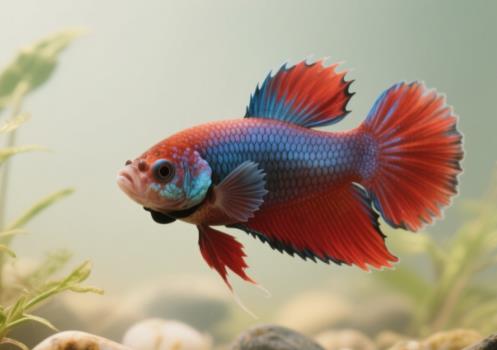Below are recommended aquatic plants suitable for Chinese betta fish (such as Macropodus opercularis and Macropodus ocellatus):

I. Safe Aquatic Plant Recommendations
Hornwort (Ceratophyllum demersum)
Features: Grows rapidly, has strong water purification capabilities, and can absorb harmful substances like ammonia and nitrogen—ideal for beginners.
Note: Requires regular pruning to avoid excessive oxygen consumption.
Mosses
Recommended Varieties: Weeping Moss (Vesicularia ferriei), Christmas Moss (Vesicularia montagnei) (avoid dense varieties like Coral Moss).
Advantages: Soft and non-abrasive, won’t scratch bettas’ fins, and suitable for aquascaping.
Note: Coverage should not exceed 30% of the water surface to avoid blocking water flow.
Floating Plants
Recommendations: Water Spangles (Salvinia minima), Water Lily (Nymphaea tetragona), Duckweed (Lemna minor).
Functions: Absorb nitrates and simulate the natural habitat, but quantity must be controlled to prevent light blockage.
Anubias (Large-leaf Varieties)
Advantages: Tolerates low light, has thick leaves, and provides shelter.
Note: Must be tied to driftwood or stones to prevent root rot; small-leaf Anubias is strictly prohibited (serrated edges easily injure fish).
Almond Leaves (Terminalia catappa)
Functions: Release tannic acid to adjust water to slightly acidic, stabilize pH levels, and inhibit bacteria.
Usage: Add 1 leaf per 20-30 liters of water; replace regularly.
II. Aquatic Plants Requiring Caution
Vallisneria
Risks: Serrated leaf edges easily scratch bettas’ fins; dense roots hinder bettas’ movement.
Some Hornwort Varieties
Issues: Stems have thorns; rotting causes water pollution—select thornless varieties.
Pothos (Submerged Portions)
Controversy: Roots can purify water, but decaying parts release alkaloids; only the aerial roots are recommended.
III. Aquascaping Principles
Reserve Swimming Space: Plant coverage should not exceed 50% to avoid interfering with bettas’ swimming.
Prevent Nighttime Oxygen Depletion: Choose low-oxygen-consumption plants (e.g., mosses) and reduce floating plant quantity.
Regular Maintenance: Remove decaying leaves and prune overgrown plants.
IV. Care Tips
Disinfect new plants by soaking them in 3% salt water for 10 minutes before placing them in the tank.
Check plant conditions weekly and promptly remove decaying parts.
Control light exposure to 6-8 hours per day to prevent algae blooms.
For further information on the care methods of specific plants, please provide the plant name for detailed explanations.
